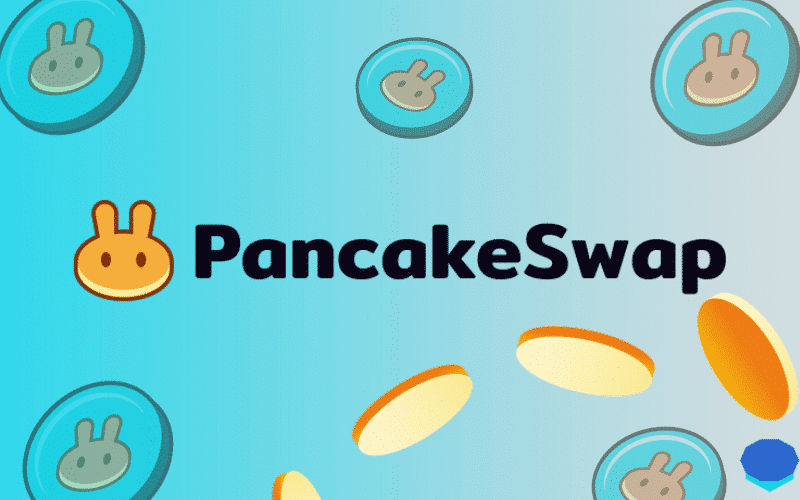PancakeSwap and the Evolution of DeFi
PancakeSwap has become one of the most recognizable names in decentralized finance (DeFi). Launched in 2020 on the Binance Smart Chain (BNB Chain), it quickly distinguished itself by offering traders and liquidity providers an alternative to Ethereum-based decentralized exchanges (DEXs). At its peak, PancakeSwap processed $1.27 billion in daily trading volume, cementing its reputation as a DeFi powerhouse.
While many protocols from the “DeFi Summer” of 2020 have faded, PancakeSwap has remained resilient. Its success lies in a unique blend of affordability, user-focused design, and constant innovation.
What Makes PancakeSwap Different?
Unlike traditional exchanges, PancakeSwap uses an Automated Market Maker (AMM) protocol. Instead of matching buyers and sellers through order books, liquidity pools power token swaps—giving users seamless, permissionless trading.
Core Features
- Low Fees: Trading on PancakeSwap costs just 0.3%, lower than many competitors.
- Liquidity Pools: Users deposit token pairs to earn rewards.
- Yield Farming: Liquidity providers can stake assets for high returns.
- Gaming Elements: A lottery, prediction markets, and quests keep engagement high.
- Cross-Chain Bridges: Support for Ethereum, Aptos, Polygon, and Arbitrum expands its reach.
This mix of utility and entertainment has attracted millions of users worldwide.
The Growth of PancakeSwap Since 2020
Originally launched as a simple swap interface, PancakeSwap has evolved into a multi-layered DeFi ecosystem. Its journey highlights how adaptability fuels longevity in crypto:
- 2020: Basic AMM and token swaps.
- 2021: Introduction of Syrup Pools and yield farming.
- 2022–2023: Cross-chain integration and bridge functions.
- 2024: PancakeSwap v3 and v4 introduced advanced liquidity models, Flash Accounts for gas efficiency, and customizable AMM layers.
This iterative development has positioned PancakeSwap as the third-largest DEX by Total Value Locked (TVL), at $1.59 billion (DefiLlama).
Inside PancakeSwap’s AMM Protocol
At its core, PancakeSwap operates on the equation X × Y = K, where liquidity pools set token prices.
Advanced Models
- Constant Product AMM: Best for liquid assets.
- Constant Sum Model: Handles assets with significant price differences.
- Liquidity Book: Enables complex liquidity strategies.
PancakeSwap v4 goes even further, offering three operational layers—AMM, Accounting, and Custom—allowing developers to add features like limit orders and automated liquidity management.
This evolution demonstrates how PancakeSwap is pushing AMM technology beyond its original limits.
Trading on PancakeSwap: A User’s Guide
For newcomers, PancakeSwap offers a straightforward entry into DeFi.
Steps to Start
- Connect Wallet: Supported wallets include MetaMask and Trust Wallet.
- Choose Token Pairs: The Smart Router finds the best trade path.
- Adjust Settings: Manage slippage tolerance and fees before confirming.
With a 0.3% fee per swap and competitive gas costs on the BNB Chain, PancakeSwap remains one of the most cost-effective DeFi trading platforms (Binance Research).
Liquidity, Yield Farming, and Staking
Liquidity providers are the backbone of PancakeSwap. With over 4 million active liquidity providers and a total value locked exceeding $6 billion at its peak, PancakeSwap’s pools remain robust.
Yield Farming and CAKE Staking
- CAKE Token: PancakeSwap’s native token offers governance rights and staking rewards.
- Annual Percentage Rates (APRs): Farms offer returns up to 25%, though yields vary.
- Strategies: Diversify across liquidity pools, track APRs, and monitor impermanent loss.
While yields are attractive, users must balance rewards against risks like smart contract exploits or market volatility.
Beyond Trading: Gaming, Lottery, and Predictions
What sets PancakeSwap apart is its gamified approach to DeFi.
- Lottery: Held every six hours, with winners drawn from CAKE-based ticket pools.
- Predictions Market: Users bet on short-term token price movements.
- Quests & Campaigns: Reward participants with NFTs and CAKE tokens.
These features not only boost user engagement but also blur the line between finance and entertainment.
PancakeSwap’s Cross-Chain Future
PancakeSwap’s expansion beyond the BNB Chain is central to its long-term strategy. It now supports Ethereum, Polygon, Aptos, and Arbitrum, allowing users to bridge assets across ecosystems.
This interoperability reflects the future of DeFi: a multi-chain environment where liquidity flows seamlessly across networks. However, bridge security remains a concern, with past exploits in DeFi highlighting vulnerabilities.
Market Performance and CAKE Token
PancakeSwap remains one of the most traded DEXs:
- Monthly Trading Volume: Up to $43 billion.
- Daily Active Users: ~200,000.
- CAKE Market Cap: $919 million (as of 2025).
- All-Time High (ATH): $47.69.
Despite market fluctuations, CAKE continues to anchor the platform, both as a governance tool and a rewards mechanism.
FAQs About PancakeSwap
What is PancakeSwap?
PancakeSwap is a decentralized exchange (DEX) launched in 2020 on the BNB Chain. It allows users to swap tokens, stake liquidity, and earn rewards using an Automated Market Maker (AMM) model.
How does PancakeSwap’s AMM protocol work?
Instead of order books, PancakeSwap uses liquidity pools. Prices are determined by token ratios within each pool, ensuring continuous market liquidity.
What are PancakeSwap’s main features?
Core features include decentralized token swaps, liquidity provision, yield farming, staking CAKE, and unique elements like lotteries, predictions, and NFT-based campaigns.
How do I start trading on PancakeSwap?
Users connect a wallet like MetaMask, select token pairs, and confirm swaps with low fees. Trading requires awareness of slippage and gas costs.
Does PancakeSwap support cross-chain trading?
Yes, PancakeSwap integrates with Ethereum, Aptos, Arbitrum, and other chains through its bridge, making it a multi-chain DeFi platform.
Is yield farming on PancakeSwap safe?
While farming can be lucrative, risks include impermanent loss and smart contract vulnerabilities. Diversification and research are key strategies for risk management.
Conclusion: PancakeSwap’s Place in the Future of DeFi
PancakeSwap has grown from a BNB Chain experiment into a DeFi institution. Its mix of low-cost trading, gamified features, and cross-chain connectivity ensures it remains competitive in an evolving landscape.
As DeFi trends shift toward multi-chain interoperability and user-friendly design, PancakeSwap is well-positioned to maintain its dominance. Its future will depend on continued innovation, security enhancements, and how effectively it engages both traders and liquidity providers in a rapidly expanding crypto ecosystem.

